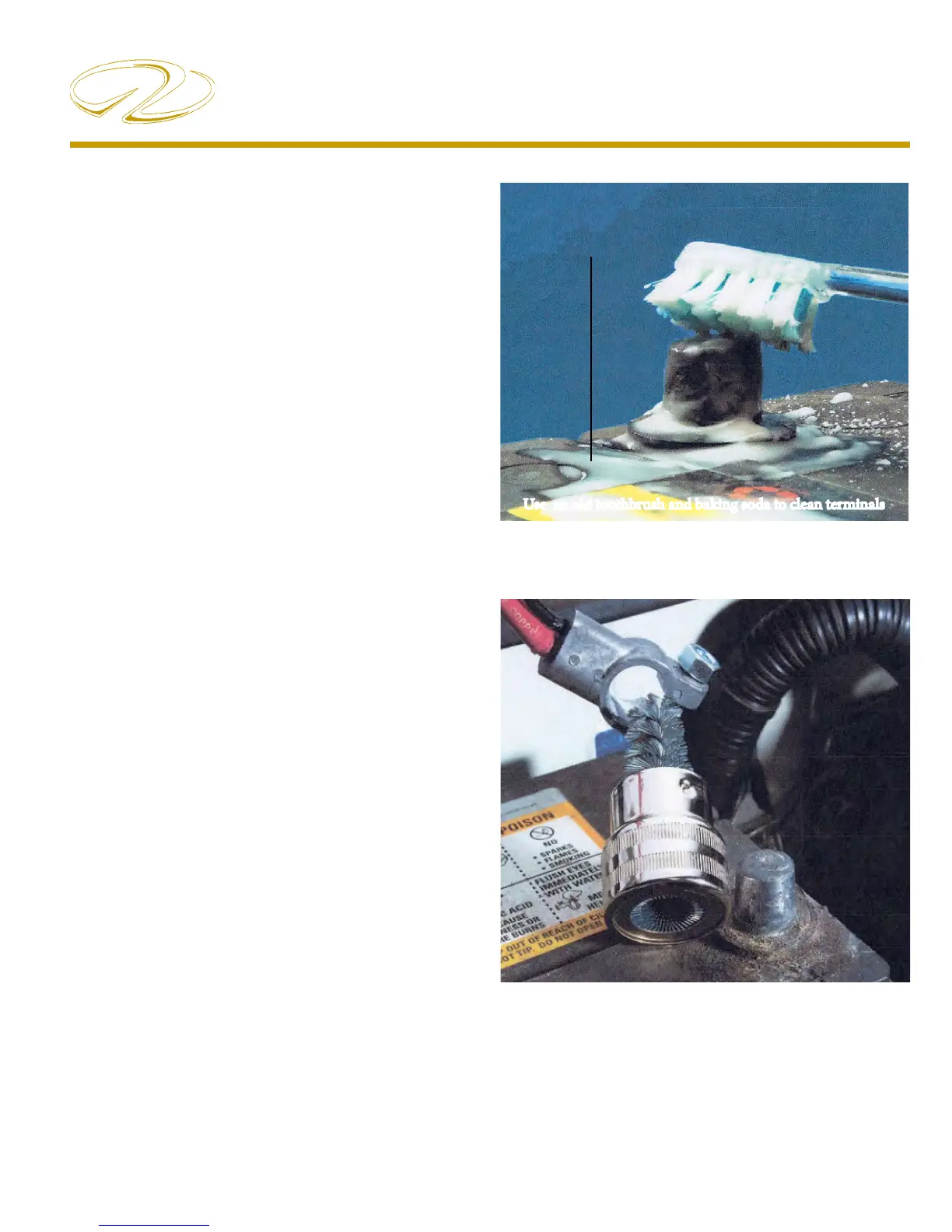19
Cosmetic Care & Maintenance
CHECKING BATTERY CONDITION
1. Test for an open-cell voltage. Use a dedicated battery
tester or a voltmeter.
With the battery fully charged with no circuits ener-
gized the voltage across the terminals should be 12.5 to
12.6 volts. If the battery is not completely charged, but
still adequate to crank the engine over, you may see a
reading closer to 12 volts.
2. If the battery shows less voltage or will not charge up
completely it may be time to replace the battery.
3. e maximum voltage you should see across the bat-
tery terminals with the engine running as read by a volt-
meter well above idle is 14.6 volts. If the reading is over
this amount the charging circuit may be supplying too
much voltage to the battery reducing the acid levels in-
side the battery.
3. Check both positive and negative terminal hardware
for tightness. Loose connections are known to discharge
a battery very quickly.
4. Make sure all terminals are clean. As discussed earlier,
a battery cleaner tool along with a toothbrush should be
used to clean both the positive and negative terminals.
Use a small amount of baking soda and water. Remove
any acid residue from the terminal area and battery top
with a damp cloth. Be sure to wear plastic gloves and eye
protection. See the illustration.
Install an anti-corrosion lubricant to the posts before
reinstalling the terminals. is lubricant is available as a
paste or spray type and can be found at most marina or
auto supply stores.
USE A BATTERY TOOL TO CLEAN CONNECTORS AND TERMINALS
BAKING SODA
AND WA
TER
CLEANING
SOLUTION
Use an old toothbrush and baking soda to clean terminals
Be sure to reinstall any red (+) battery (anti-short)
boots.
